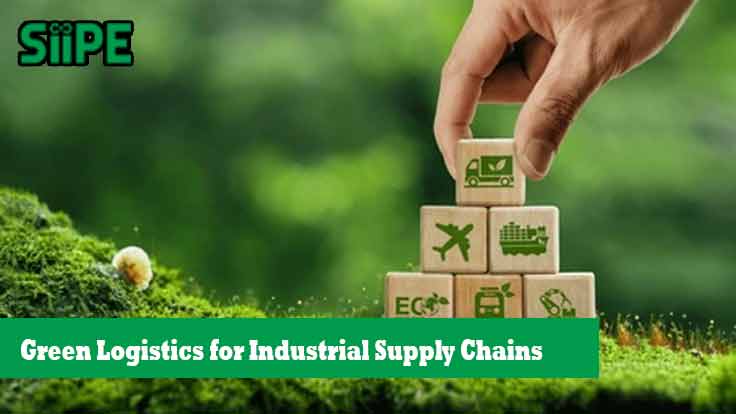In the era of climate change, resource scarcity, and global sustainability goals, industries worldwide are being urged to rethink how they operate. One critical area undergoing transformation is the supply chain—specifically through the adoption of green logistics.
Green logistics, also known as sustainable logistics, refers to the practices and strategies used to reduce the environmental impact of logistics and supply chain operations. This includes everything from reducing carbon emissions and fuel consumption to improving energy efficiency, optimizing routes, and minimizing waste.
When applied to industrial supply chains, green logistics becomes even more vital due to the large scale of movement, materials, and energy consumption involved. Let’s explore why green logistics matters, how it’s implemented in industrial settings, and what the future holds.
Why Green Logistics Matters in Industrial Supply Chains
Industrial supply chains involve the movement of raw materials, semi-finished goods, and finished products—often across vast distances and multiple countries. These activities contribute significantly to:
-
Greenhouse gas (GHG) emissions
-
Air and noise pollution
-
Excessive packaging and landfill waste
-
Energy overuse
The logistics sector alone contributes around 11% of global CO₂ emissions, and industrial transport (including trucking, shipping, and air freight) forms a major chunk of this. By embracing green logistics, industries can:
-
Lower operational costs through fuel efficiency and route optimization
-
Enhance brand reputation and meet stakeholder demands for sustainability
-
Comply with environmental regulations (e.g., EU Green Deal, carbon tax)
-
Future-proof operations against rising fuel prices and climate-related disruptions
Key Components of Green Logistics
To implement green logistics in industrial supply chains, companies must integrate sustainability at multiple levels:
1. Eco-Friendly Transportation
-
Use of electric or hybrid vehicles for short-haul and inner-city delivery
-
Adoption of alternative fuels such as biodiesel, LNG, or hydrogen
-
Encouraging modal shifts from road to rail or sea to reduce emissions
-
Implementing route optimization software to reduce unnecessary mileage
2. Green Warehousing
-
Energy-efficient lighting and HVAC systems
-
Installing solar panels or other renewable energy sources
-
Using automated warehouse systems to improve space and time efficiency
-
Recycling and reusing materials for packaging and storage
3. Sustainable Packaging
-
Switching to biodegradable or recyclable materials
-
Designing compact, right-sized packaging to reduce waste and space
-
Promoting returnable packaging systems in B2B industrial transactions
4. Reverse Logistics
-
Establishing channels for returns, refurbishing, and recycling
-
Handling end-of-life products and materials responsibly
-
Creating closed-loop supply chains that maximize resource reuse
5. Digitalization and Monitoring
-
Use of IoT devices to track emissions, fuel usage, and temperature control
-
Implementing blockchain for transparent and traceable green practices
-
Utilizing AI-based analytics to continuously improve logistics performance
Benefits of Green Logistics for Industrial Players
Integrating green logistics is not just a compliance or branding exercise—it delivers tangible business benefits, such as:
✔ Cost Reduction
Efficient fuel use, optimized routes, and lean inventory management cut logistics costs significantly over time.
✔ Risk Mitigation
By reducing dependency on fossil fuels and lowering emissions, companies are better prepared for future carbon taxes and environmental regulations.
✔ Competitive Advantage
Companies with sustainable supply chains are preferred by environmentally conscious customers, investors, and partners.
✔ Improved Resilience
A green supply chain often includes diversified transport modes and smart inventory systems—helping businesses respond more flexibly to disruptions.
Challenges in Adopting Green Logistics
Despite its advantages, green logistics implementation is not without challenges:
-
High Initial Investment: Electric vehicles, green buildings, and smart systems require upfront capital.
-
Technological Barriers: Not all regions have access to clean fuels or smart infrastructure.
-
Regulatory Complexity: Varying environmental laws across countries can complicate compliance.
-
Supply Chain Complexity: Global industrial supply chains involve many players, making alignment difficult.
However, with the right strategies, these challenges can be overcome through phased implementation, government incentives, and industry collaboration.
Real-World Examples of Green Logistics in Industry
📦 DHL
DHL has committed to achieving zero emissions by 2050. In industrial logistics, they use electric trucks, carbon-neutral warehouses, and route optimization powered by AI.
🚚 Toyota
Toyota’s logistics division focuses on reducing CO₂ in parts and vehicle transport by adopting rail, marine transport, and energy-efficient warehouses.
🏭 Unilever
Unilever has integrated green logistics by reducing the number of trucks on the road through load optimization and using smart warehousing powered by solar energy.
Future Outlook Green is the New Standard
The future of industrial supply chains is undeniably green. Regulatory frameworks like the European Green Deal, Paris Agreement, and ASEAN Smart Logistics Vision will continue to pressure industries to adapt.
Emerging technologies such as:
-
Autonomous electric trucks
-
Green hydrogen fueling stations
-
AI-driven predictive logistics
-
Drone delivery for remote areas
…will redefine how goods are transported and managed sustainably.
Moreover, Environmental, Social, and Governance (ESG) metrics are becoming central to investor decision-making, pushing industries to build greener supply chains.
Green logistics is more than an environmental initiative—it is a strategic approach to building resilient, cost-effective, and future-ready supply chains. For industrial sectors with heavy logistics demands, adopting sustainable practices isn’t just a choice—it’s a necessity.
From eco-transport to smart warehouses, reverse logistics to digital tracking, every step toward green logistics creates a ripple effect of benefits—economically, environmentally, and socially.
The industries that act today will be the ones that lead tomorrow.











